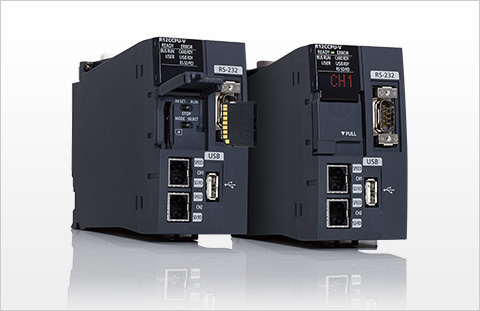Improving production control terminal reliability on the shop floor
First released October 2015
At Mitsubishi Electric’s Fukuyama Works, the company’s C Controller modules are used on the circuit breaker production line. These components have replaced PCs, which were complicated to maintain due to factors such as OS updates and troubleshooting. The C Controllers also integrate seamlessly with the PLCs used for equipment control – all while solving the weaknesses of the previous PC-based system.
Key points of this case study
- 1. Ensuring durability by migrating from PCs to a reliable factory automation (FA) environment
- 2. Security and maintenance involves less work
- 3. Link with PLCs saves space and improves program development efficiency
Upgrading to the C Controller
The Mitsubishi Electric Fukuyama Works manufactures circuit breakers, measurement equipment such as power meters, power distribution control devices, and vehicle fuel pumps. Around 140 PCs were in operation across the production site. General consumer PCs and programs were utilized for various applications, including controlling equipment, printing information such as bar codes onto products and packaging, and checking production management information.
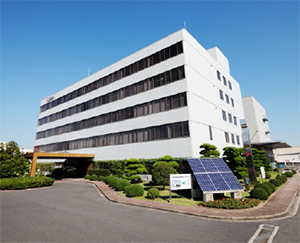
The Mitsubishi Electric Fukuyama Works and main products manufactured
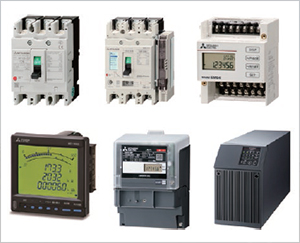
The Mitsubishi Electric Fukuyama Works and main products manufactured
However, there were major issues with continuing to use PCs at the production site, one of which was durability. A production site features more vibration and dust than a normal office. This is not a suitable environment for a PC, so there were frequent failures of hard disks, motherboards and power supplies. Even with proper maintenance of production equipment, if the PC controlling it fails, there will be a major effect on the utilization rate.
Another issue was the increasing complexity of security measures and license management. Using PCs to control equipment involves maintaining both assets. Security management, such as program updates and supervision of installed software, is needed. Although it is only a single device within the production equipment, a PC requires complex oversight.
There were also difficulties with OS upgrades. Consequently, in 2014 the Fukuyama Works decided to replace the PC programs with C language, allowing the adoption of the C Controller. This device easily connects with PLCs and has the advantage of stable long-term support, which means that a highly reliable system can be achieved.
The first step was to determine the applications that PCs were being used for at the Fukuyama Works production site. These were identified and classified into three categories:
- 1.Where the C Controller could be applied immediately by restructuring software, etc.
- 2.Where it could be used in future by providing middleware or libraries, etc.
- 3.Those requiring PC-only functions where it could not currently be applied
For use cases where the C Controller could be implemented immediately, the team decided to introduce it in systems as an update, or when new equipment was being added.
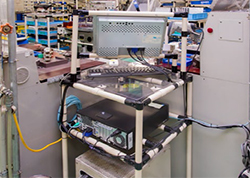
PCs used across the production site at the Fukuyama Works
Using peripheral devices
The first applications where the C Controller was introduced included two newly constructed performance testing machines and a production volume display device that required upgrading. The performance testing machines are used to test circuit breakers by applying overcurrent to check that they cut off properly within the specified time. An instruction sheet is attached to the circuit breaker to be tested, which is scanned with a reader to set the test equipment to the specified performance level. The test is then started by scanning a bar code on the side of the circuit breaker.
The production volume display device calculates manufacturing output in real time, comparing planned and actual daily figures to indicate whether the schedule is being met.
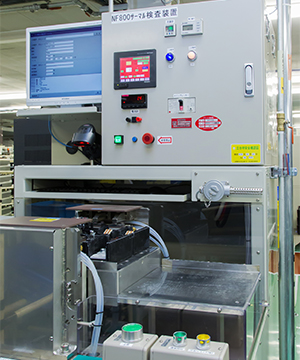
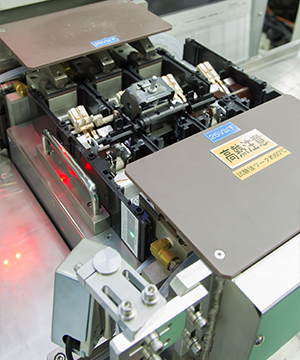
Circuit breaker performance testing machine using C Controller. A bar code on the side of the circuit breaker is scanned to start the test
C Controllers were introduced in the performance testing machines, marking the first step in the migration from PCs to a factory automation (FA) system built around PLCs. The test equipment requires interfaces with a monitor, keyboard, bar code reader, and access to a database to input and show test conditions and store and display results. The C Controller has RGB, USB, and LAN interfaces, just like a PC, which meant the migration was completed without any major changes to the system configuration.
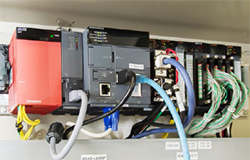
PLC on the back of the performance testing machine. The C Controller in the center has USB, LAN, and RGB interfaces like a PC.
Integrated start-up and shutdown of equipment
Originally developed as a FA device to be used in factory settings, the C Controller possesses excellent durability. Previously, when using PCs, sudden failures sometimes led to equipment stoppages. Since integrating the C Controllers, durability has improved, resulting in stable operations without stoppages.
Furthermore, complicated supervision of PCs is no longer required. The C Controller uses open-source OS and program development environments, which has simplified license management.
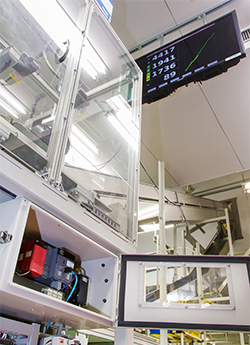
Production volume display device where C Controller has replaced PCs
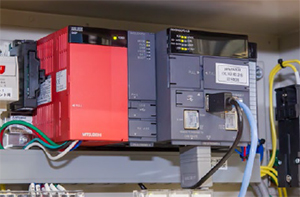
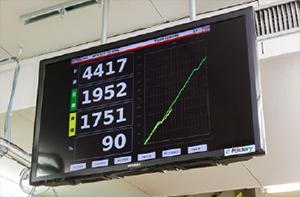
The C Controller for the production volume display device gets planned and actual volumes from the database via LAN, then compares the two on the display to reveal any delays in real time
In addition, it also simplifies the start-up and shutdown of equipment. “When beginning production every morning, the PC had to be started up separately. Now, as the C Controller is integrated with the PLC, the operator only needs to start up the equipment,” explains Yoshihito Kominato of the IT Planning Section, Production System Promotion Department at the Fukuyama Works. Additionally, because operations other than the work procedure can also be performed on a PC, a password had to be entered from a keyboard as a security measure, rather than simply turning the power on. On the screen for the C Controller however, unnecessary input is restricted. Start-ups and shutdowns have been simplified by integrating this functionality with the PLC.
Another effect of replacing PCs with C Controllers is space saving. PCs at production sites need to be installed on specially prepared shelves or stands. Manufacturing facilities aim to increase productivity per area, which means minimizing the space taken up by equipment that does not directly contribute to production. As the C Controller can be physically integrated with a compact PLC, it saves space. Wiring is also simplified, reducing potential rewiring work when the layout is changed.
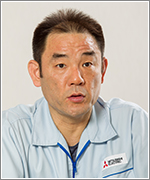
Yoshihito Kominato, IT Planning Section, Production System Promotion Department, Mitsubishi Electric Fukuyama Works
Replacing PCs with C Controllers did not involve much program development work either. The device is designed for PLC control, so there was no need for additional software to communicate with the PLC. The C Controller can easily read information from devices controlled by the PLC, and it does not require programs that are developed for the PC, such as those for synchronization of start-up timing.
More applications as the range of drivers expands
The performance testing machines and production volume display device were selected as the first applications to benefit from the C Controller. Since it features the drivers necessary, the next plan is to construct a system using C Controllers for new product inspection equipment.
Although there isn’t currently a C Controller driver for laser marking and printing labels onto products and packaging, this is now under development. The Fukuyama Works will introduce additional systems using C Controllers as the range of drivers expands, allowing this device to be utilized in more and more applications.

